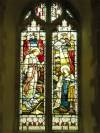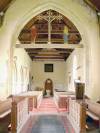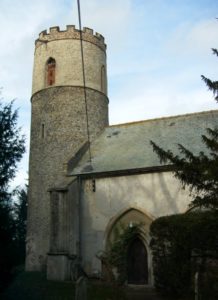Eccles St Mary








































St Mary's Church Eccles
Where to find this church
Church Information
St Mary’s church is located in Eccles, a small rural Norfolk village to the south of the main A11 road to Norwich.
This church is usually open to visitors
* denotes external links that open in a new window


Visiting East Walton St Mary
St Mary’s church in Eccles used to be locked in the past; however, according to the Exploring Norfolk Churches site, it is now open 7 days a week. It has another round tower that is circular all the way up. Its belfry rests on a string course, but the matching flintwork, above and below the line of stone, indicates that the tower was all one build, except for the 15th century battlemented parapet which contains much brick. The simple pointed belfry openings suggest a date of late 13th/early 14th century, which date is supported by the similar shaped pointed tower arch.
The walls of the long narrow nave are rendered with plaster, but the chancel, of the same width, reveals its flint. The upkeep and improvement of the chancel was the responsibility of the Rector, whilst the Parish maintained the nave, tower, porches, etc. This often led to a different appearance of the two parts, (different window tracery, different roof material) probably depending on how much money was available at the time. There was formerly a 14th century south aisle, (its blocked arches can still be seen inside), hence the unusual shape of the windows fitting into the blocking. The Rood stair turret was also demolished, in 1730, but its doorway is still there. There is no south porch, and the north one is used as a vestry.
The chancel has a string course of stone below its windows, typical of about 1300, and there is a priest’s doorway of similar date, the string course rising to a square hood mould above it.
There is a modern 1959 Rood beam displaying the Crucifixion with St Mary and St John on either side, as it would have had in medieval times. The exit from the removed Rood stairs shows at the south end of the beam, and below is part of a former statue niche. The large chancel arch is 15th century and has a band of fleurons within one of its mouldings, and one or two other things, such as a lion head.
The chancel has a double piscina, which was only in fashion around 1300. This has the shafts and arches of that date, under a square hood mould. The present altar has the largest surviving stone mensa slab, 9 feet 8 inches x 3 feet six inches, used as an altar in medieval times. This was found in the churchyard in 1947 and returned to its proper use. It has the five crosses, one in the centre and one in each corner, indicating the five wounds that Jesus suffered while on the Cross.
Conclusion: rural and simple church with some nice features


